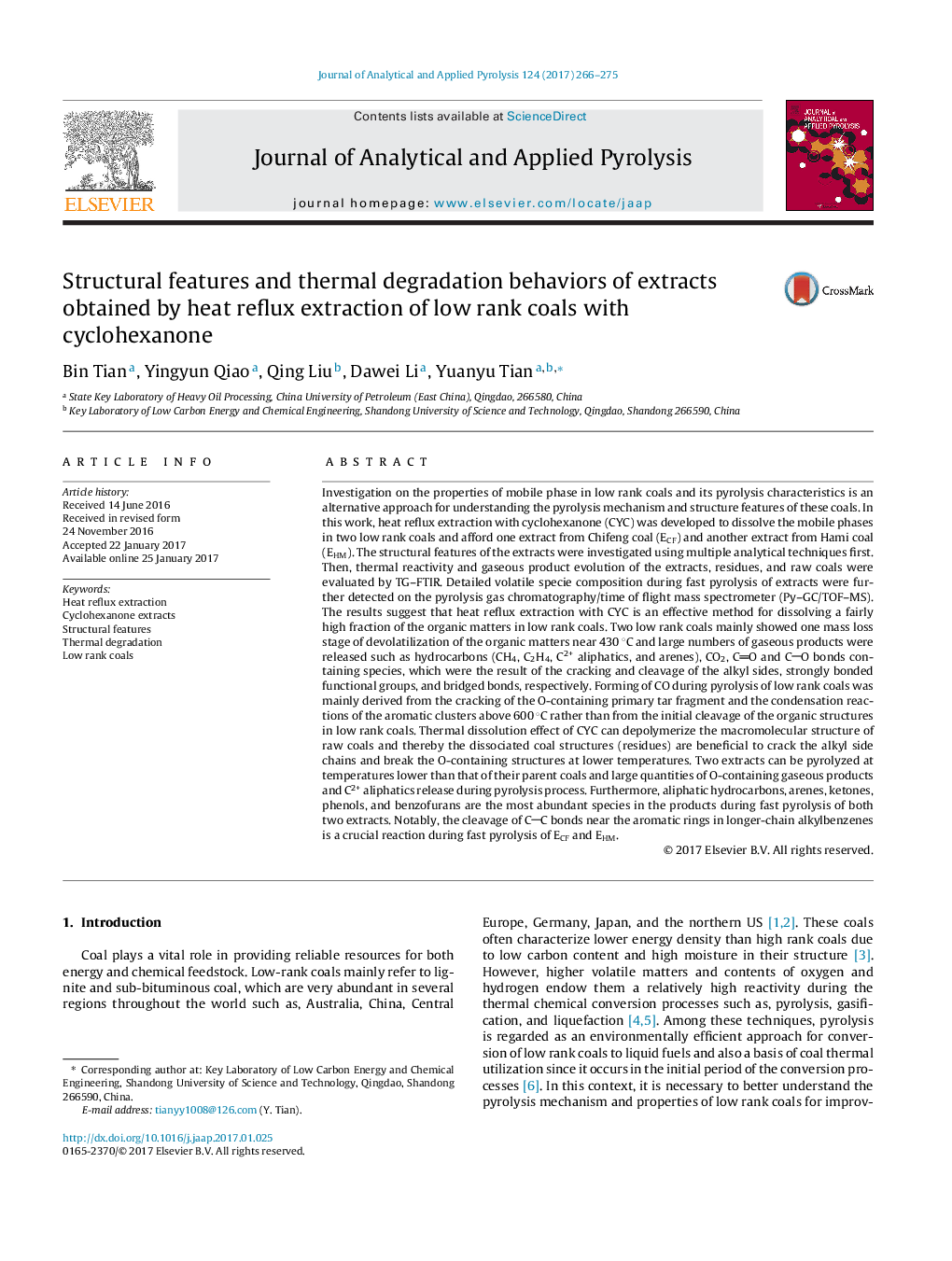| Article ID | Journal | Published Year | Pages | File Type |
|---|---|---|---|---|
| 5134592 | Journal of Analytical and Applied Pyrolysis | 2017 | 10 Pages |
â¢HRE with CYC is an effective approach for dissolving low rank coals.â¢CYC extracts contain plenty of aliphatic and oxygen-containing species.â¢CYC extraction made coals easy to decompose the alkyl side chains and the O-containing structures.â¢Tar cracking and condensation reactions are the major source of CO during pyrolysis.â¢Cleavage of CC bonds near the aromatic rings is a crucial pyrolysis reaction.
Investigation on the properties of mobile phase in low rank coals and its pyrolysis characteristics is an alternative approach for understanding the pyrolysis mechanism and structure features of these coals. In this work, heat reflux extraction with cyclohexanone (CYC) was developed to dissolve the mobile phases in two low rank coals and afford one extract from Chifeng coal (ECF) and another extract from Hami coal (EHM). The structural features of the extracts were investigated using multiple analytical techniques first. Then, thermal reactivity and gaseous product evolution of the extracts, residues, and raw coals were evaluated by TG-FTIR. Detailed volatile specie composition during fast pyrolysis of extracts were further detected on the pyrolysis gas chromatography/time of flight mass spectrometer (Py-GC/TOF-MS). The results suggest that heat reflux extraction with CYC is an effective method for dissolving a fairly high fraction of the organic matters in low rank coals. Two low rank coals mainly showed one mass loss stage of devolatilization of the organic matters near 430 °C and large numbers of gaseous products were released such as hydrocarbons (CH4, C2H4, C2+ aliphatics, and arenes), CO2, CO and CO bonds containing species, which were the result of the cracking and cleavage of the alkyl sides, strongly bonded functional groups, and bridged bonds, respectively. Forming of CO during pyrolysis of low rank coals was mainly derived from the cracking of the O-containing primary tar fragment and the condensation reactions of the aromatic clusters above 600 °C rather than from the initial cleavage of the organic structures in low rank coals. Thermal dissolution effect of CYC can depolymerize the macromolecular structure of raw coals and thereby the dissociated coal structures (residues) are beneficial to crack the alkyl side chains and break the O-containing structures at lower temperatures. Two extracts can be pyrolyzed at temperatures lower than that of their parent coals and large quantities of O-containing gaseous products and C2+ aliphatics release during pyrolysis process. Furthermore, aliphatic hydrocarbons, arenes, ketones, phenols, and benzofurans are the most abundant species in the products during fast pyrolysis of both two extracts. Notably, the cleavage of CC bonds near the aromatic rings in longer-chain alkylbenzenes is a crucial reaction during fast pyrolysis of ECF and EHM.
